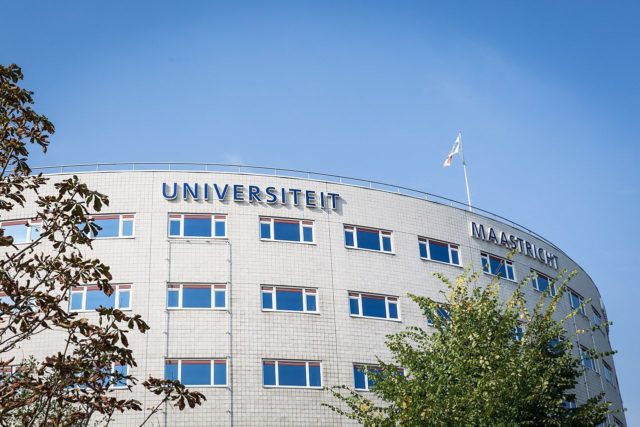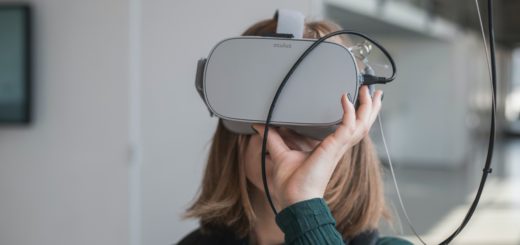Keep Abreast of Robot Surgeons

In science fiction, the idea of integrating robots into healthcare has been explored with curiosity and fascination. Utilizing nanobots that traverse within the body to monitor signs of infection or cancerous cells1 and designing autonomous robots to assist surgical procedures sound as if they could pave the way for breakthroughs in medicine. It could also inspire young minds to believe that robots in healthcare could give a glimmer of hope that a loved one may be saved from something as threatening as cancer, which is the second leading cause of death across the globe today.
However, it could seem daunting and maybe out of reach, as a lot of the groundwork happens behind the scenes, especially when researching and developing robots for the healthcare sector. There are numerous ways robotics can be applied in hospitals, yet the general public may not be aware of how it can benefit patients and surgeons alike. Another dilemma to address is if there is a demand at all for such an endeavour. It will be a while before the concept of robotically equipped medical healthcare becomes a universally common practice, but progress has been made in recent years.
For example, at the Maastricht University Medical Centre in the Netherlands, the first surgical operation to implement robots took place 2. Surgeons were tasked with restoring the flow of fluid in lymphatic vessels to reduce swelling in a patient with lymphedema. According to Anouk J. M. Cornelissen from the Department of Plastic and Reconstructive Surgery at Maastricht University 3, lymphedema is a ‘debilitating disease’ with adverse effects that can arise from breast cancer treatments. Swelling can develop after radiotherapy and other regional treatments due to the build-up of lymphatic fluid and can be treated almost immediately. However, if left untreated, the fluid accumulated may damage tissues and create deposits of molecules in lymphatic vessels that would make it difficult for the lymphatic system to filter waste. Consequently, this can cause the patient to suffer from physical impairments that can affect their daily life and also make them more susceptible to infection.
Thus, after detecting a build-up of fluid, one of two types of surgeries will be carried out 4. One option is to carry out lymphatico-venous anastomosis, which involves connecting lymphatic vessels to blood vessels within the limb affected by swelling. The second procedure, called vascularised lymph node transfer, involves the transplantation of new lymphatic tissue. Both of these surgical approaches treat lymphedema by allowing the excess lymphatic fluid to drain. However, they both require a high standard of medical expertise and steady hands to be successful.

Image Credit: Brightlands via WikiCommons (License CC BY-SA 4.0) Maastricht University
For the surgeons at Maastricht University Medical Centre, lymphatico-venous anastomosis was accomplished through a robotic system that was designed by Microsure 5, a technology company based in Eindhoven. Using ‘robot hands’ 6, they were able to conduct anastomosis procedures by stitching the vessels in the patient’s arm with the aid of robotics. Dr Shan Shan Qiu Shao, a surgeon from the medical centre, commented that the robotic device allowed him to be ‘very precise’ when he attached lymph vessels to blood vessels. He further remarked that anastomosis was ‘complex and exhausting’ as a surgical procedure, so having a robot minimise errors by stabilising the doctor’s hand, for instance, would be a great asset in the medical department.
A factor medical professionals need to consider is whether these robotically aided procedures could improve a patient’s quality of life. Cornelissen noted that successful anastomosis surgery with guided assistance from robots would significantly improve the physical capabilities of patients by reducing functional impairment caused by swelling. This would, therefore, create relief for the patient to pursue social and physical activities and continue on with their daily life. For that reason, implementing robotic devices, such as those designed by Microsure, could help to improve the health and the quality of life in patients after cancer treatment.The threat that diseases impose and the damage they can cause to our health and well-being is a common concern for most of us. With breast cancer patients at an increased risk of developing lymphedema, implementing robots to assist in surgeries to relieve patients of this debilitating disease is paving the way forward for robotics in medicine. In the future, could it be possible to involve robots in other surgical procedures, such as removing cancerous tissues? It is reasonable to assume that executing this initiative may be uncomfortable for members of the public. Thus, healthcare professionals have to take patients’ concerns into consideration during the development of medical procedures within the realm of robotics and show that science fiction has become fact, and these robots are here to help.
This article was specialist edited by Anna Henschel and copy-edited by Kathryn McCall.
References
- For more information on nanobots, refer to: www.ncbi.nlm.nih.gov/pmc/articles/PMC4562685
- To learn more about the surgery at Maastricht University Medical Centre, refer to: www.maastrichtuniversity.nl/news/world%E2%80%99s-first-super-microsurgery-operation-%E2%80%98robot-hands%E2%80%99
- For Cornelissen’s prospective study on lymphedema, refer to: link.springer.com/article/10.1007%2Fs10549-017-4180-1
- If interested in the surgical procedures used to treat lymphedema, refer to: link.springer.com/article/10.1007%2Fs10585-018-9897-7
- For more information on Microsure and their endeavours, refer to: microsure.nl
- To watch a video of Microsure’s ‘robot hands’, refer to: www.youtube.com/watch?v=lpV8IaT_8N0&feature=youtu.be










